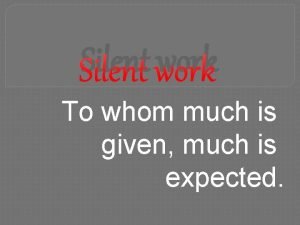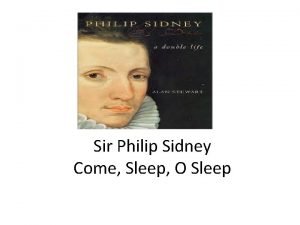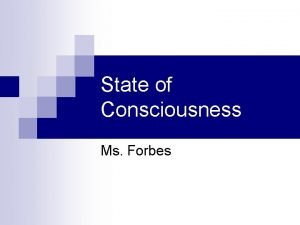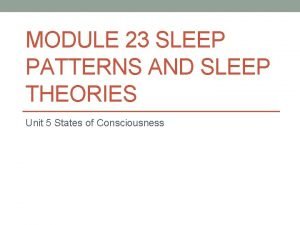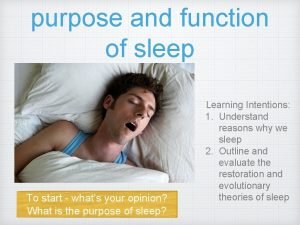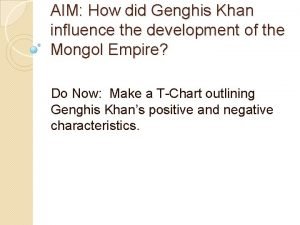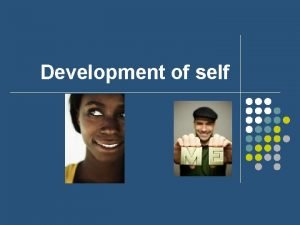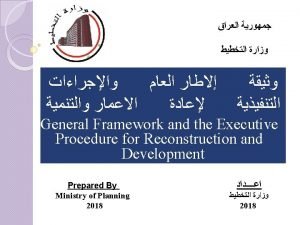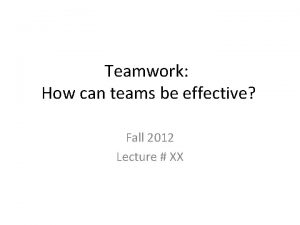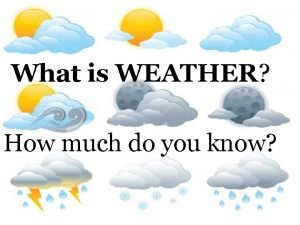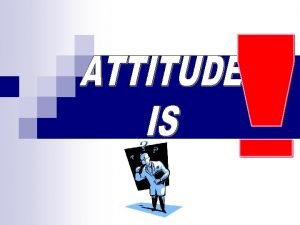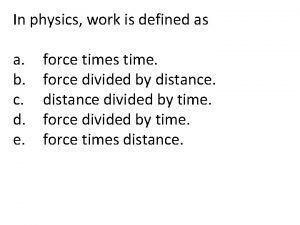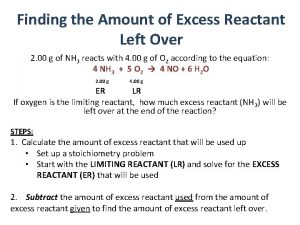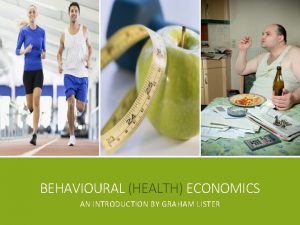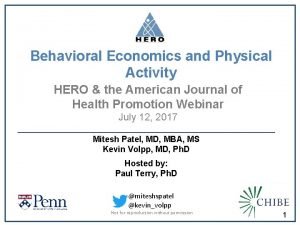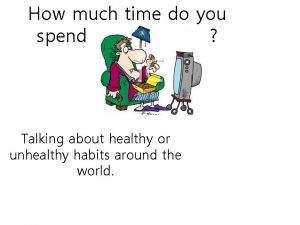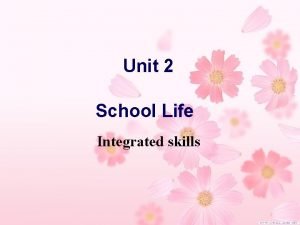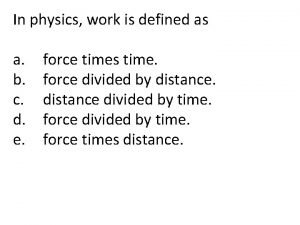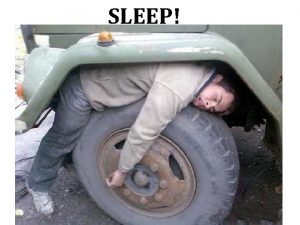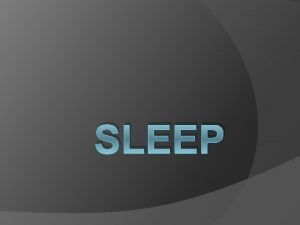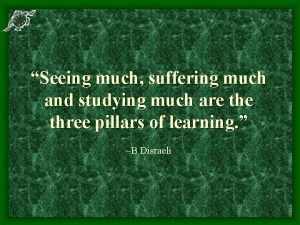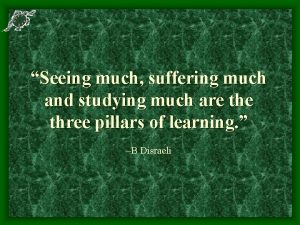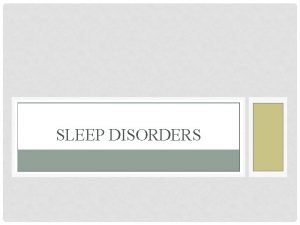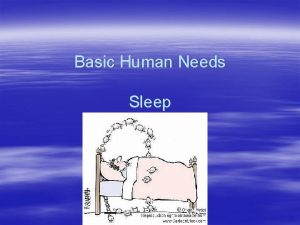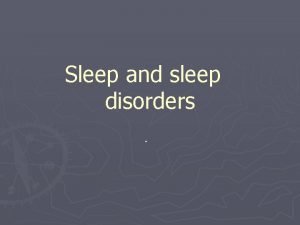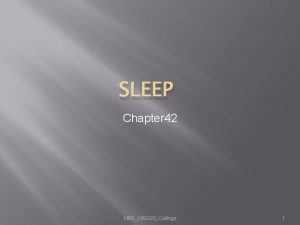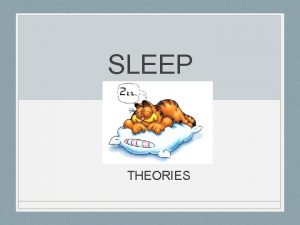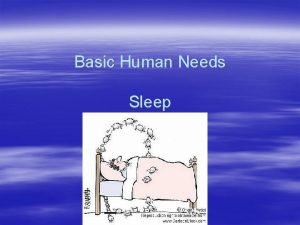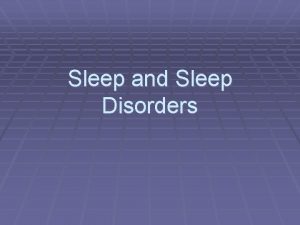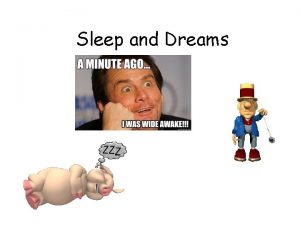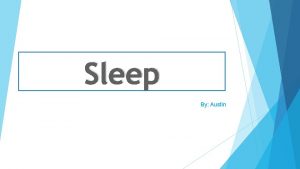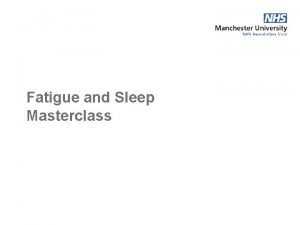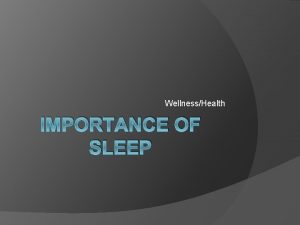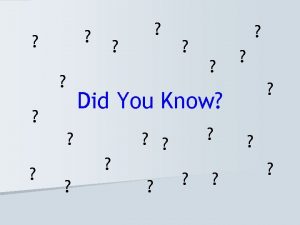Importance of Sleep HOW MUCH SLEEP DID YOU










































- Slides: 42

Importance of Sleep

HOW MUCH SLEEP DID YOU HAVE LAST NIGHT? ¡How many hours did you sleep last night? ¡What time did you go to bed? ¡What time did you wake up? ¡Did you feel refreshed in the morning? ¡Did you wake up during the night? If so, at what time(s)?

https: //www. youtube. com/watch? v=gedo. Sf Zv. Bg. E

Sleep as an altered state of consciousness ¡No single definition ¡Sleep can be described as a regularly occurring altered state of consciousness (ASC) that typically occurs naturally and is primarily characterised by a loss of conscious awareness ¡Over our lifetime, we spend about one-third of our time asleep ¡If you are 17 years old, you have probably spent more than 5. 5 years asleep. A person who is 45 years old has spent about 15 years asleep and someone who is 75 years old 25 years. ¡We spend up to one-third of our waking time daydreaming, or more than 5 hours per day (1 year every 4. 5 years). Add this up. How many years have you spent sleeping and daydreaming?

Sleep as an altered state of consciousness ¡Level of awareness ¡We have some, albeit very little, awareness of our external environment when we are asleep. ¡At times, we may incorporate what is happening around us into a dream or we may suddenly be woken from a deep sleep by something highly personally relevant (such as a parent responding to their baby’s crying).

Sleep as an altered state of consciousness ¡Content limitations ¡When we sleep, we relinquish conscious control of our thoughts. ¡Everyone dreams and the dreams we remember tend to be bizarre. ¡The contents of our dreams tend to be much broader and deeper than our thoughts in normal waking consciousness.

Sleep as an altered state of consciousness ¡Controlled and automatic processes ¡Performing other tasks is probably impossible. ¡It is interesting to note that most sleep walkers, known as somnambulists, usually carry out routine, automatic processes when they sleep walk

Sleep as an altered state of consciousness ¡Perceptual and cognitive distortions ¡Our attention to sensory stimuli is lowered during sleep, including our perception of pain. ¡Our thoughts are more likely to be disorganised and unrealistic during our dreams. ¡Although most of us dream about four or five times a night (about 2 hours in total), we remember little upon awaking

Sleep as an altered state of consciousness ¡Emotional awareness ¡Our emotions can be more or less intense or flattened during sleep. ¡A nightmare can make us feel very scared and a good dream can make us feel terrific. ¡There is some evidence that sleep can help us deal with our emotions (Cartwright, 1998). ¡Have you ever felt very anxious about something late at night, but woken up the next morning after a good night’s sleep feeling better?

Sleep as an altered state of consciousness ¡Self-control ¡Our ability to maintain self-control, including monitoring our own behaviour, is lowered during sleep. ¡For instance, we may snore, grind our teeth or talk during our sleep.

Sleep as an altered state of consciousness ¡Time orientation ¡Our ability to perceive the speed at which time passes may be affected. Time can seem to fly and, on other nights, it can feel as if it takes forever to reach the morning. ¡Despite this, there is growing evidence that suggests we have the ability to estimate the amount of time that has elapsed during sleep ¡Often, we are able to wake up at a predetermined time without the use of an alarm clock. It appears that the ability to estimate time is associated with our deep (stages 3 and 4 NREM) sleep and is more likely when we follow a regular sleep routine, including going to bed at the same time each night.

Activities ¡Worksheet ¡Review Questions 14. 1 ¡Activity 1

Characteristics and patterns of sleep ¡Our bodies are attuned to a sleep–wake cycle that revolves around night and day. ¡This cycle is an example of a circadian rhythm, determined by an internal body clock, located in the hypothalamus, where hormones including cortisol and melatonin are regulated ¡Cortisol levels link with our level of alertness, with higher levels associated with greater alertness. ¡Melatonin, a sleep hormone, causes sleepiness and is released when it is dark. It is secreted from the pineal gland. ¡Light stops melatonin secretion and therefore light can prevent sleepiness.

Characteristics and patterns of sleep

Characteristics and patterns of sleep ¡Over the course of a typical night’s sleep we experience two distinctly different states, or types, of sleep known as: - non-rapid-eye-movement sleep (NREM sleep) - rapid-eye-movement sleep (REM sleep) ¡These occur in continuous cycles ¡A period of REM sleep follows each period of NREM sleep ¡The NREM/REM cycle is an example of an ultradian rhythm, a biological rhythm that is shorter than 24 hours. ¡A cycle of NREM sleep consists of four distinct stages, each of which can be identified by a different brain wave pattern

https: //www. youtube. com/watch? v=Xe 1_1 n dp. Dvs

Stages of sleep Characteristics and patterns of sleep • Each sleep cycle (REM & NREM) lasts 90 mins on average • REM sleep increases in duration, NREM decreases • There are 4– 6 continuous sleep cycles per night

NREM Sleep ¡Approximately 80% of our sleep time is spent in NREM sleep ¡Typically the first half of the night has more NREM sleep than the second half of the night ¡During NREM sleep the brain is active, but not as active as during REM sleep or NWC

NREM Sleep ¡NREM sleep consists of four different stages in which the sleeper progresses from a stage of light sleep to the stage of deepest sleep and back again through one or more stages to light sleep ¡Every stage of sleep is dominated by a particular identifiable brain wave pattern that is different to that of the other stages ¡Each brain wave pattern can be distinguished in terms of two characteristics: the number of brain waves (frequency) and the intensity of brain waves (amplitude)

NREM Sleep ¡The term frequency is used to describe the number of brain waves. e. g. low frequency=relatively few brain waves per second/ ‘slow’ brain wave activity, and high frequency=a lot of brain waves per second/’fast’ brain wave activity.

NREM Sleep ¡The term amplitude is used to describe the intensity of brain waves and is estimated by the size of the brain waves; e. g. the peaks (‘highs’) and troughs (‘lows’) evident in the pattern of activity

NREM Sleep ¡When we first close our eyes and begin to relax before going to sleep, our brain emits bursts of alpha waves. ¡Alpha wave patterns are associated with relaxation and drowsiness and are characterised by a fairly regular pattern of high-frequency and mediumamplitude brain waves, as recorded by the EEG ¡This transition period from being awake to being asleep is characterised by slow, rolling eye movements and is sometimes called the hypnagogic state ¡This state may last for a minute or two and some people experience flashes of light, feelings of floating, sense of falling etc. ¡Our body then drifts to the first stage of the NREM sleep cycle

NREM-Stage 1 ¡During stage 1 we are drifting into and out of a true sleep state ¡We tend to gradually lose awareness of ourselves and our surroundings, but some of the time are aware of faint sounds ¡Physiological changes indicate a lower level of bodily arousal (e. g. decrease in heart rate, body temp. , respiration etc. ) ¡As a result of the muscles relaxing we may experience a ‘jerking’ sensation, this stage 1 spasm is known as a hypnic jerk ¡Typically lasts for 5 -10 mins, if woken, may feel we haven't been asleep

NREM-Stage 2 ¡This is a light stage of sleep and some researchers identify this as the point of true sleep ¡Sleep is less easily disturbed than in stage 1, but we can still be easily aroused from this sleep stage ¡This stage lasts for about 10 -20 mins, body movements lessen, breathing becomes more regular, blood pressure and body temp. continue to fall and heart rate is slower

NREM-Stage 2 ¡Brief bursts of higher frequency brain wave activity called sleep spindles periodically appear on the EEG recording. ¡A burst of sleep spindles last for about one second, and their presence is an indicator the person is truly asleep ¡EEG patterns also show bursts of low-frequency and slightly higher amplitude waves, called K complexes, in response to arousing stimuli ¡In comparison to stage 3 and 4 NREM sleep, stage 2 is still considered to be light sleep

NREM-Stage 3 ¡Stage 3 is the start of the deepest period of sleep and lasts for about 10 minutes ¡Heart rate, blood pressure and body temp. continue to drop and breathing rate continues to be slow and steady ¡Individual is extremely relaxed and becomes less and less responsive to the outside world ¡People are difficult to arouse, but if woken they are groggy/disoriented ¡This is the beginning of slow wave sleep (SWS) ¡Generally, we begin SWS within an hour of falling asleep, and remain in SWS for about 30 mins

NREM-Stage 4 ¡The deepest stage of sleep ¡The physiological signs of NREM stage 4 are similar to NREM stage 3. ¡Our muscles are completely relaxed and we barely move ¡A person is very difficult to wake, if woken they may take up to 10 minutes to orient themselves and usually have a poor memory of sleep events ¡In the first sleep cycle, a person may spend up to 20 mins in stage 4, as the night progresses, less and less time is spent in stage 3&4 ¡In sleep cycles close to morning, there may be no stage 3 or 4 sleep

NREM-Stage 4 ¡It is during the very deep sleep stages 3 and 4 that sleep phenomena such as sleepwalking, sleep talking and night terrors occur

• Stage 1: a light sleep, commonly experience hypnic jerk • Stage 2: a light sleep, sleep spindles & K complexes detected • Stage 3: a deep sleep, sleep phenomena occurs (stages 3 & 4) • Stage 4: deepest sleep, sleep inertia experienced if woken. NREM-Recap

REM Sleep ¡REM Sleep is a period of rapid-eye-movement sleep

REM Sleep ¡REM Sleep is a period of rapid-eye-movement sleep ¡The brain wave pattern associated with REM sleep is irregular, consisting of low-amplitude, relatively high-frequency beta waves, like those produced during alert wakefulness ¡The body’s internal functioning is more active than in NREM sleep ¡Heart rate is faster and more irregular, blood pressure rises and breathing is quicker and more irregular, the sleeper is totally relaxed ¡An observer might say the sleeper appears paralysed during REM sleep. ¡This paralysis is known as muscle atonia or cataplexy

REM Sleep ¡Consequently REM sleep is called paradoxical sleep- internally the brain and body are active, but, externally, the body appears inactive What is the purpose of this? ¡Most dreaming occurs during REM sleep ¡We dream several times a night, even though we may not remember ¡Dreaming also occurs during NREM sleep, but the dreams are less frequent, less memorable, less vivid and less fragmented ¡REM periods lengthen and occur closer together as the night progresses

REM Sleep ¡Early in the night, a REM period may last for only a few minutes, while a later REM period may last up to an hour or so ¡Are you often dreaming when woken by an alarm in the morning? ¡REM sleep is more like wakefulness than NREM sleep when brain wave activity is considered ¡However, if muscle tone is considered, then REM sleep can be called deep sleep due to muscle tone being at its lowest point ¡Therefore, psychologists tend to view REM sleep as sharing the properties of both light and deep sleep

Activities ¡Worksheet ¡Workbook Activity 2 and 3 ¡Review Q’s 14. 2

Purpose of Sleep ¡Research findings on the effects of sleep deprivation, as well as observations about the need for sleep in individuals and among people of different ages, have led psychologists to propose various theories about why we sleep. ¡One set of theories proposes that sleep has restorative functions, another set of theories suggests that we sleep to enhance our survival by being inactive at night. ¡Although both sets adopt different approaches in explaining the purposes of sleep, they are not necessarily mutually exclusive, as there may be more than one reason to explain why we sleep.

Evolutionary theory proposes that sleep conserves energy and protects organisms from danger. Predators sleep more than their prey, but smaller animals who can hide easily also sleep more. Purpose of sleep Restoration theory proposes that NREM sleep restores and repairs the body, while REM sleep restores the brain and is involved in processes of memory and learning. What are the criticisms of each theory?

Activities ¡Review Q’s 14. 4 ¡Workbook Activity 4

Sleep patterns across the lifespan

Sleep patterns across the lifespan ¡ The amount of total sleep time spent in NREM and REM sleep changes across different stages of the lifespan ¡ Amount of time spent sleeping gradually decreases as we get older ¡ Additionally, the proportion of total sleep time spent in REM sleep decreases markedly from infancy to adolescence, and then remains relativity stable into adulthood and old age ¡ Newborn infant, sleep 16 hours, end of infancy sleep 12 -13 hours end of childhood/ sleep 9 hours onset of adolescence late adulthood sleep 6 -7 hours 50% REM sleep 25 -30% REM sleep 20% REM sleep

Activities ¡Lifespan Activity ¡Literature Review ¡Revision Sheet

Quick Quiz • Question 1: The procedure for conducting sleep observations in a sleep laboratory is known as? • Answer: • Question 2: What device detects, amplifies and records electrical activity of the muscles? • Answer: • Question 3: What percentage of an adults sleep is comprised of REM? • Answer: • Question 4: During which stage of NREM do sleep spindles occur? • Answer: • Question 5: Identify the hormone that makes us feel sleepy at night time. • Answer: • Question 6: Identify the term that describes our 24 hour ‘biological clock’. • Answer:

Quick Quiz • Question 1: The procedure for conducting sleep observations in a sleep laboratory is known as? • Answer: Polysomnography • Question 2: What device detects, amplifies and records electrical activity of the muscles? • Answer: EMG • Question 3: What percentage of an adults sleep is comprised of REM? • Answer: 20% • Question 4: During which stage of NREM do sleep spindles occur? • Answer: Stage 2 • Question 5: Identify the hormone that makes us feel sleepy at night time. • Answer: Melotonin • Question 6: Identify the term that describes our 24 hour ‘biological clock’. • Answer: Circadian rhythm
 Where you went
Where you went Did you sleep with mr wilson
Did you sleep with mr wilson How much
How much True or false katniss dismisses haymitch advice
True or false katniss dismisses haymitch advice How much is too much plagiarism
How much is too much plagiarism Come sleep o sleep the certain knot of peace
Come sleep o sleep the certain knot of peace Adults spend about ______% of their sleep in rem sleep.
Adults spend about ______% of their sleep in rem sleep. Module 16 sleep patterns and sleep theories
Module 16 sleep patterns and sleep theories Module 23 sleep patterns and sleep theories
Module 23 sleep patterns and sleep theories Module 23 sleep patterns and sleep theories
Module 23 sleep patterns and sleep theories About last weekend
About last weekend How much does wanda earn per hour?
How much does wanda earn per hour? When did genghis khan rule
When did genghis khan rule How did you become you?
How did you become you? David swan characters
David swan characters Thank you for attention!
Thank you for attention! How much you have
How much you have You have much to learn
You have much to learn How much do you already know about
How much do you already know about Why does a descending mass of air become drier
Why does a descending mass of air become drier Similes in romeo and juliet act 1, scene 5
Similes in romeo and juliet act 1, scene 5 Iceberg attitude
Iceberg attitude Thank you and any question
Thank you and any question In physics work is defined as
In physics work is defined as Wish you lots of strength
Wish you lots of strength Fm group fragrance
Fm group fragrance How to determine how much excess reactant is left over
How to determine how much excess reactant is left over How much do you better health
How much do you better health Much do you need health
Much do you need health Thank you for your attention and participation
Thank you for your attention and participation People don t care how much you know
People don t care how much you know How much time do you spend _______ tv every day?
How much time do you spend _______ tv every day? Thank you for coming here today
Thank you for coming here today How much time do you this
How much time do you this Co2 how much do you spew answer key
Co2 how much do you spew answer key Could you tell me please
Could you tell me please If i profane with my unworthiest hand
If i profane with my unworthiest hand How much can you remember about last year
How much can you remember about last year If you lift one load up two stories how much work
If you lift one load up two stories how much work God loves you so much
God loves you so much You say you love the rain
You say you love the rain Good health is a choice agree or disagree
Good health is a choice agree or disagree If you think you can you can poem
If you think you can you can poem



